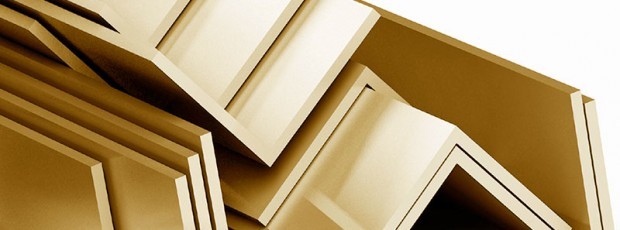Brass has a classy and elegant look that not many other alloys can come close to. Ever since its amazing properties were discovered, this metal has been used for various applications. Everything from coins to architecture, you’ll find traces of brass. This is mainly because apart from being strikingly appealing, brass is also durable and malleable. It has all the necessary qualities for aesthetic and practical uses.
Most brass pieces in the past were only available in plain sheets, tubes, or pipes. With the invention of new metal forming techniques and other advances in metallurgy, most complex designs for brass pieces are already achievable. Whether you need a super-thin sheets or exceedingly complex brass extrusions, you’re very likely to achieve your goal.
What is extrusion?
Extrusion is a metal working process in which a metal, in this case brass, is melted and then pushed through a certain die to create a fixed, cross-sectional profile. A lot of metalworkers are choosing this process because it’s much faster and it is capable of making the most complex cross-section designs while using very brittle materials. Plus, the resulting extrusions usually have a beautiful smooth surface finish that is valued from a design point of view.
This process has another very useful aspect. During the extrusion process, manufacturers can elect to do a continuous extrusion to produce longer pipes or cut them into smaller pieces, depending on the demand.
Properties Achieved with Extrusion
Brass extrusions are known for having the following properties.
Durability – Brass is famous for its ability to withstand a lot of wear and tear. The same quality is seen in extrusions made with the material. The secret lies on the alloy’s flexibility and malleability. Meaning, it can be contorted into a wide variety of shapes and sizes without losing strength and quality.
Cost-Effectiveness – It is no secret that construction projects, renovations, and repairs cost a lot. Having the option to choose a material that is strong and reliable minus the expenses is a blessing. If you are looking for a more affordable solution without going over budget, extrusions made of brass are the answer.
The Looks – Using brass is a triple win for many people. Not only is it very strong, affordable, but it also has a nice finished look. This shine is further enhanced by the extruding process, which makes the material look even classier. Anyone with an eye for design will agree that brass accents on furnishing bring out the elegance and class of a room.
Where to Use Extruded Brass?
Now that you know more about the extrusion process and the reasons why extruded brass is so beneficial, you must start asking what its applications are.
Architectural Uses
Due to the combination of its many unique qualities extruded brass is excellent when used for a number of architectural applications. When they are molded and cut expertly they can be used as:
- Handrails and other railings
- Columns
- Gates
- Hinges
- Doors
- Skirting
- So much more!
Design Applications
Since brass is also valued for its gleam and shine, they extrusions also have a number of aesthetic applications that allows the creativity to flow free. These are some examples:
- Accents for furniture
- Jewelry
- Decorative fixtures
- Picture frames
The Many Other Uses
The versatility of brass expands its applications significantly. Some very common but somewhat unorthodox uses for these extrusions range from brass musical instruments to parts of signage. There are actually no limits to where these cross-sectional profiles can be used for. It all depends on how creative you can get with them. Another factor that will help expand the use far from the typical is working with a manufacturer who can deliver options.
Sources:
Extrusion, en.Wikipedia.org
Brass Extrusions, DeecoMetals.com


